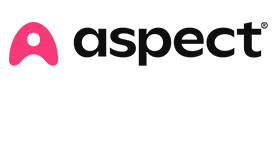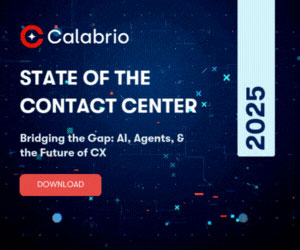Daniella Deloatch at Aspect explores the fundamentals of skills-based scheduling in workforce management, examines how performance management enhances scheduling processes, and highlights the organizational impact of these approaches.
The “one-size-fits-all” approach rarely works for most things. Workforce scheduling is no exception. Today’s contact centre environment is complex, and many organizations are turning to solutions like skills-based scheduling to elevate their workforce management approaches.
Aligning talent with the right tasks at the right time is a cornerstone of effective workforce management, and skills-based scheduling supports that.
When combined with actionable insights from performance analytics, skills-based workforce scheduling can optimize operational efficiency, ensuring employees are providing the best customer experiences matched to their skillset.
What is Skills-Based Scheduling in Workforce Management?
Skills-based scheduling takes into account individual employee skill sets, proficiencies, expertise, and performance when creating schedules.
This workforce management approach views employees as unique team members with distinct abilities to bring to the workplace, rather than interchangeable resources who can handle any customer interaction.
The foundations of workforce skills-based scheduling includes:
- Skill identification: Identify and classify skills that are most relevant to your organization’s success. Documenting these employee skills across different customer interactions can inform where and when to place employees in a schedule.
- Proficiency and performance tracking: Utilize performance metrics and skill mapping to assess and record each employee’s level of proficiency and growth with identified skills.
- Dynamic scheduling: Dynamic scheduling in workforce management systems can optimize resource allocation by creating schedules that account for forecasted volumes and employee skill sets.
The Role of Performance Management Metrics in Scheduling
Skills-based scheduling doesn’t magically work on its own. You need accurate, data-driven insights from employee performance to gauge capabilities and determine the most effective scheduling.
Key performance metrics can support effective skills-based scheduling, but the metrics you prioritize may vary depending on your organization’s goals.
Some key performance indicators (KPIs) that can support skills-based scheduling in your workforce include:
Quality Scores
Quality management solutions offer insights into scores that reflect how well employees perform specific skills. Quality scores can provide clarity on what employees excel at and which customer interactions they handle best.
First Contact Resolution
First contact resolution (FCR) reveals which employees excel at resolving issues on the first interaction, without needing additional follow-ups.
Employees with high FCR rates for specific channels (voice, chat, email, etc.) should be prioritized for those scheduling slots, as they handle these interactions most effectively.
Average Handle Time
Average handle time (AHT) on its own can reveal which interactions an employee can handle most quickly.
When coupled with quality metrics, AHT can help inform the best scheduling for fast and effective customer support.
Customer Satisfaction
CSAT and NPS scores offer critical customer feedback on how employees are meeting expectations. Analysing these scores by interaction type can identify which employees perform best across different scenarios.
Developing Integrated Skills-Based Workforce Scheduling
Successful implementation of skills-based scheduling depends on accurately assessing employee skills and capabilities. Consider these key factors when integrating performance management with skills-based approaches:
Build a Skills and Competency Matrix
A skills matrix is a helpful tool for managers or administrators to visualize employee skill sets and their level of competency.
This matrix should be updated to reflect changes in business needs and offerings, which can inform skills-based scheduling decisions.
Implement Continuous Performance Monitoring
Performance management software allows organizations to go beyond periodic performance reviews that may not provide a holistic picture of employee performance.
Continuous performance monitoring allows scheduling to be shifted based on changing employee skills and performance.
Foster Skill Development
Create clear and customized learning pathways for employees to develop new skills and fill gaps in existing areas.
This supports more flexible scheduling as employees enhance their skillsets and also provides career growth opportunities that improve retention.
Support Effective Data Integration
Seamless data integration between performance management software, learning management systems, and workforce management platforms ensures a unified ecosystem that supports effective, accurate data-driven scheduling.
Benefits of an Integrated Scheduling Approach
With a data-driven approach to workforce scheduling, organizations can strategically align employee skillsets with specific scheduling requirements.
Implementing performance-driven scheduling delivers several business benefits:
- Improved customer experience
- Enhanced operations and efficiency
- Higher employee satisfaction and retention
- Accelerated employee skill development
Strategic alignment of employee skills and performance with customer demand minimizes staffing challenges while enhancing service quality, creating wins across all aspects of your business.
An Evolution in Workforce Scheduling
Workforce scheduling needs have evolved beyond simplistic approaches that treat employees as interchangeable. Organizations must create tailored and more intelligent approaches to workforce scheduling.
Skills-based scheduling enhances both employee and customer experiences by matching complex interactions with team members who have the specific skills to meet customer expectations.
Innovative approaches to workforce management aren’t just a business necessity, they’re a competitive advantage in today’s rapidly evolving workplace landscape.
This blog post has been re-published by kind permission of Aspect – View the Original Article
For more information about Aspect - visit the Aspect Website
Call Centre Helper is not responsible for the content of these guest blog posts. The opinions expressed in this article are those of the author, and do not necessarily reflect those of Call Centre Helper.
Author: Aspect
Reviewed by: Rachael Trickey
Published On: 30th Oct 2025
Read more about - Guest Blogs, Aspect






 Building upon more than 50 years of industry-leading experience, Aspect is reimagining workforce management tools with a new approach to innovation.
Building upon more than 50 years of industry-leading experience, Aspect is reimagining workforce management tools with a new approach to innovation. 






























